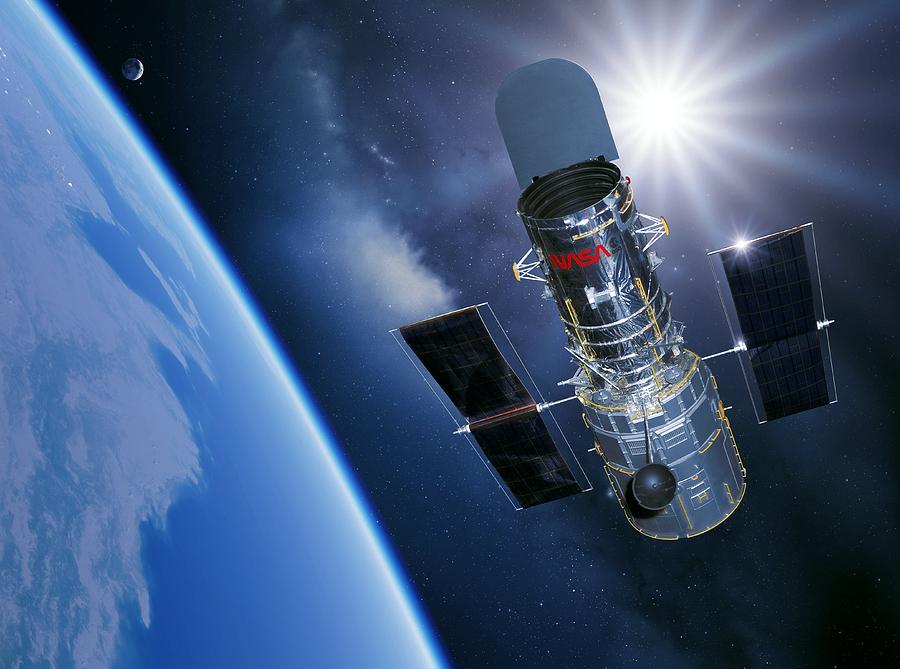

The telescope was removed in the mid-1960s and is now located at the NJAA Observatory in Voorhees State Park, New Jersey. The viewing window has been damaged by falling logs, the dome has rusted in place, and the upper floors are treacherous with rotten wood, but the ruin still manages to draw the interest of explorers. While it has been emptied of its equipment, the Knightridge Space Observatory still stands. This, combined with a growing obsolescence, led to the observatory’s eventual abandonment. The area of Bloomington continued to grow over the years and eventually grew close enough to the station that the observatory’s delicate viewing instruments were no longer as effective. The facility was simple, but effective for early 20th-century astronomers.

The dome was placed on a track with rollers that allowed the entire ceiling to rotate in order to find the best viewing angles. SDO is designed to help us understand the Suns influence on Earth and Near-Earth space by studying the solar atmosphere on small scales of space and time and in many wavelengths simultaneously. While the outer wall is made of sturdy brick, the interior construction and the dome were built from wood. The squat building consists of just two rooms, one on the ground floor and an upper room where the crude, four-ton telescope could look out of the retractable viewing slot built into the domed ceiling. After lobbying in the 1960s and 70s for such a system to be built, Spitzer's vision ultimately materialized into the world's first space-based optical telescope, Hubble Space Telescope, which was launched on Apby the Space Shuttle Discovery (STS-31).Update: The observatory was torn down in 2020. Only brick rubble remains.īuried in the Indiana wilderness, the abandoned Knightridge Space Observatory is astronomy’s answer to the eerie backwoods shack.Ī simple, two-story telescope dome, the observatory was built between 19 in the then-remote area of Bloomington. Spitzer's proposal called for a large telescope that would not be hindered by Earth's atmosphere.
SPACE OBSERVATORY TV
Get the latest updates on NASA missions, watch NASA TV live, and learn about our quest to reveal the unknown and benefit all humankind. See the satellite and space-station views of various shorelines from across the United States. brings you the latest images, videos and news from Americas space agency. But even if you're a regular at your local swimming hole, you probably haven't seen too many beaches from this perspective.

Summer is beach season in the northern hemisphere. In 1946, American theoretical astrophysicist Lyman Spitzer was the first to conceive the idea of a telescope in outer space, a decade before the Soviet Union launched the first satellite, Sputnik. NASA Earth Observatory Goes to the Beach. A public astronomical observatory which is second to none, under some of the darkest skies in the world where. Satellites have been launched and operated by NASA, ESA, Japanese Space Agency and the Soviet space program later succeeded by Roskosmos of Russia. Kielder Observatory Astronomical Society. Many space observatories have already completed their missions, while others continue operating, and still others are planned for the future. Space observatories can generally be divided into two classes: missions which map the entire sky (surveys), and observatories which make observations of chosen parts of the sky. Infrared and ultraviolet are also greatly blocked. For example, X-ray astronomy is nearly impossible when done from the Earth, and has reached its current importance in astronomy only due to orbiting X-ray telescopes such as the Chandra observatory and the XMM-Newton observatory. Following the endorsement of the responsible. Space-based astronomy is even more important for frequency ranges which are outside of the optical window and the radio window, the only two wavelength ranges of the electromagnetic spectrum that are not severely attenuated by the atmosphere. The Norwegian Centre for Space Weather (NOSWE) was established in collaboration with the Norwegian Space Agency in 2014 as a semi-independent department under Tromsø Geophysical Observatory, one of the major space weather service providers in Norway, at UiT The Arctic University of Norway. A telescope orbiting the Earth outside the atmosphere is subject neither to twinkling nor to light pollution from artificial light sources on the Earth. Some terrestrial telescopes (such as the Very Large Telescope) can reduce atmospheric effects with adaptive optics. Performing astronomy from the Earth's surface is limited by the filtering and distortion of electromagnetic radiation ( scintillation or twinkling) due to the atmosphere. A large number of observatories have been launched into orbit, and most of them have greatly enhanced our knowledge of the extraterrestrial universe.


 0 kommentar(er)
0 kommentar(er)
